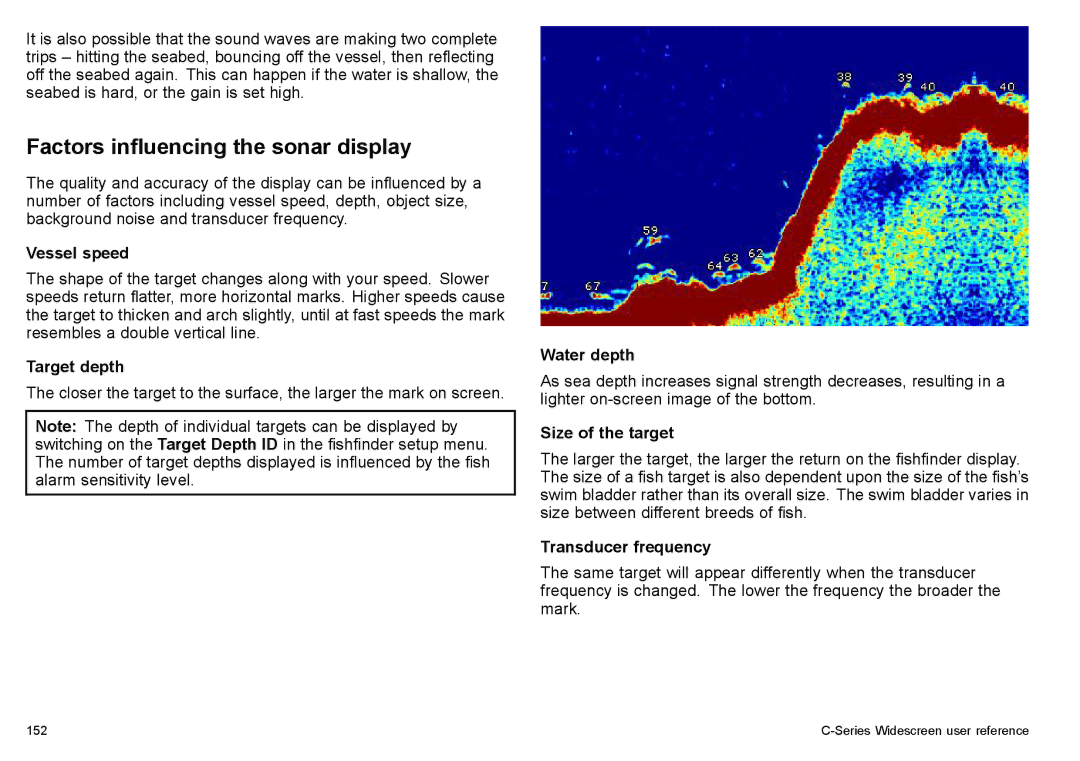
It is also possible that the sound waves are making two complete trips – hitting the seabed, bouncing off the vessel, then reflecting off the seabed again. This can happen if the water is shallow, the seabed is hard, or the gain is set high.
Factors influencing the sonar display
The quality and accuracy of the display can be influenced by a number of factors including vessel speed, depth, object size, background noise and transducer frequency.
Vessel speed
The shape of the target changes along with your speed. Slower speeds return flatter, more horizontal marks. Higher speeds cause the target to thicken and arch slightly, until at fast speeds the mark resembles a double vertical line.
Target depth
The closer the target to the surface, the larger the mark on screen.
Note: The depth of individual targets can be displayed by switching on the Target Depth ID in the fishfinder setup menu. The number of target depths displayed is influenced by the fish alarm sensitivity level.
Water depth
As sea depth increases signal strength decreases, resulting in a lighter
Size of the target
The larger the target, the larger the return on the fishfinder display. The size of a fish target is also dependent upon the size of the fish’s swim bladder rather than its overall size. The swim bladder varies in size between different breeds of fish.
Transducer frequency
The same target will appear differently when the transducer frequency is changed. The lower the frequency the broader the mark.
152 |
|
